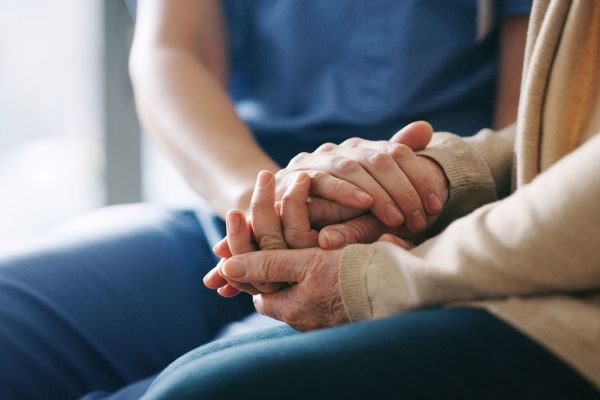Written by Thomas Lane, NCPS, CRPS
Every 40 seconds someone dies by suicide somewhere in the world.[1] The human tragedy of death by suicide is getting worse, with global suicide rates increasing 60% in the past 45 years.[1] Most people reading this article will know someone who has been impacted by suicide. One group of folks especially at risk for a suicide attempt are those who have tried to complete suicide previously. Data suggests that 20% of attempt survivors will make another attempt.[2]
I am one with personal experience. I am part of that 20%. As a double attempt survivor, I have haunting memories of those periods in my life when I was more fearful of living than I was afraid of dying. For me, those were the darkest, loneliest, and longest days of my life. After my second attempt in the winter of 1998, I wound up on a ventilator. I was in a coma for 12 days and when I woke up, I felt like someone was choking me. And I was angry. At the time, when I was literally regaining consciousness and coming back to the land of the living, my mom was downstairs with hospital administrators signing an agreement to discontinue life support for me.
As the saying goes, timing is everything.
After a lengthy and very shaky period, I began to get better. I was receiving good mental healthcare, redefining my circles of support, and I had a purpose. I came to believe I still had work to do. Now. On this planet. I had twice crossed the line of deciding I could not be here. Despite my best efforts, I was still here, facing my life. I decided I would seek meaning from as many of my experiences as I could. For the past 20-plus years, I have worked to build and advance peer support, particularly within the context of publicly funded healthcare systems, but also at the grassroots level and through public/private partnerships. I am more convinced than ever of the value, importance and unique perspectives folks with lived experience bring to the table, specifically those who choose to pursue careers as peer specialists. It has been and continues to be a transformative movement, even more so when we understand that many folks who make a choice to work in the peer support field, in the same delivery systems that may not have served them well, do so out of a passion for the work and to give back, to pay it forward.
I share this very personal experience as context for my next point.
In a 2016 survey of Magellan members receiving peer support services, 98% reported their certified peer specialist helps them to, both, improve their quality of life, and feel hopeful about their recovery.[3] Knowing what we do now about the effectiveness of peer support, and understanding the value of lived experience, I believe we can agree about the importance of connecting attempt survivors with peer supporters who have had similar experiences. For most, if not all, attempt survivors, there is a crucial time period after an attempt; I needed intensive support in the days following my second attempt. Sadly, intensive support is not always available, let alone offered by a peer who is also an attempt survivor. I can’t help but wonder, what would universal referral to, or at least an orientation about, peer support opportunities by and for attempt survivors, look like? Considering the COVID-19 pandemic, we have seen a rapid, albeit sometimes rocky, migration to technology-enabled service delivery. Interestingly, peer support has been “technology-enabled” for years in the form of peer-operated warmlines. If you’re not familiar with warmlines, check out the National Empowerment Center at https://power2u.org/peer-run-warmlines-resources/ for great information.
When we consider suicide, we know it is all about prevention, that is, preventing people from attempting to take their own lives. I don’t believe there is a higher calling. Many of my peers with the shared experience of being an attempt survivor have expressed to me this is the most important work they do. We see the positive impact of attempt survivors speaking out about their experiences. We see the importance of eliminating shame associated with the topic of suicide. We know suicide is preventable. We understand that prevention requires dialogue, and dialogue isn’t always comfortable. Nonetheless, the topic of suicide must be brought out of the shadows and recognized as the public health crisis it is, one that we can do something about through evidence-based prevention and education practices. We know it does not increase a person’s likelihood of attempting suicide to talk with them about what they’re feeling. Fortunately, there are many, many organizations pledged to this work. From grassroots organizations founded by survivors of suicide loss to nationally recognized organizations, the conversation is changing. We must continue to be intentional in our approach.
National Suicide Prevention Awareness Month helps shine a light on this often misunderstood and taboo topic. Let’s keep the conversation going for the other eleven months of the year. As peers, let’s renew our commitment to offering support, speaking out and holding the hope for someone until they are able to hold it for themselves. As fellow human beings, let’s take inspiration from Emily Dickinson, and tap the eternal hope perched in all of us.
“Hope is the thing with feathers, that perches in the soul
And sings the tune without the words
And never stops…at all.”
For information about Magellan events during Suicide Prevention Awareness Month, suicide prevention downloadable materials and more free resources, visit our suicide prevention website.
[1] https://www.who.int/mental_health/prevention/suicide/suicideprevent/en/
[2] https://bmcpsychiatry.biomedcentral.com/articles/10.1186/s12888-017-1317-z
[3] Magellan Peer Support Services Outcomes in Pennsylvania, 2016





